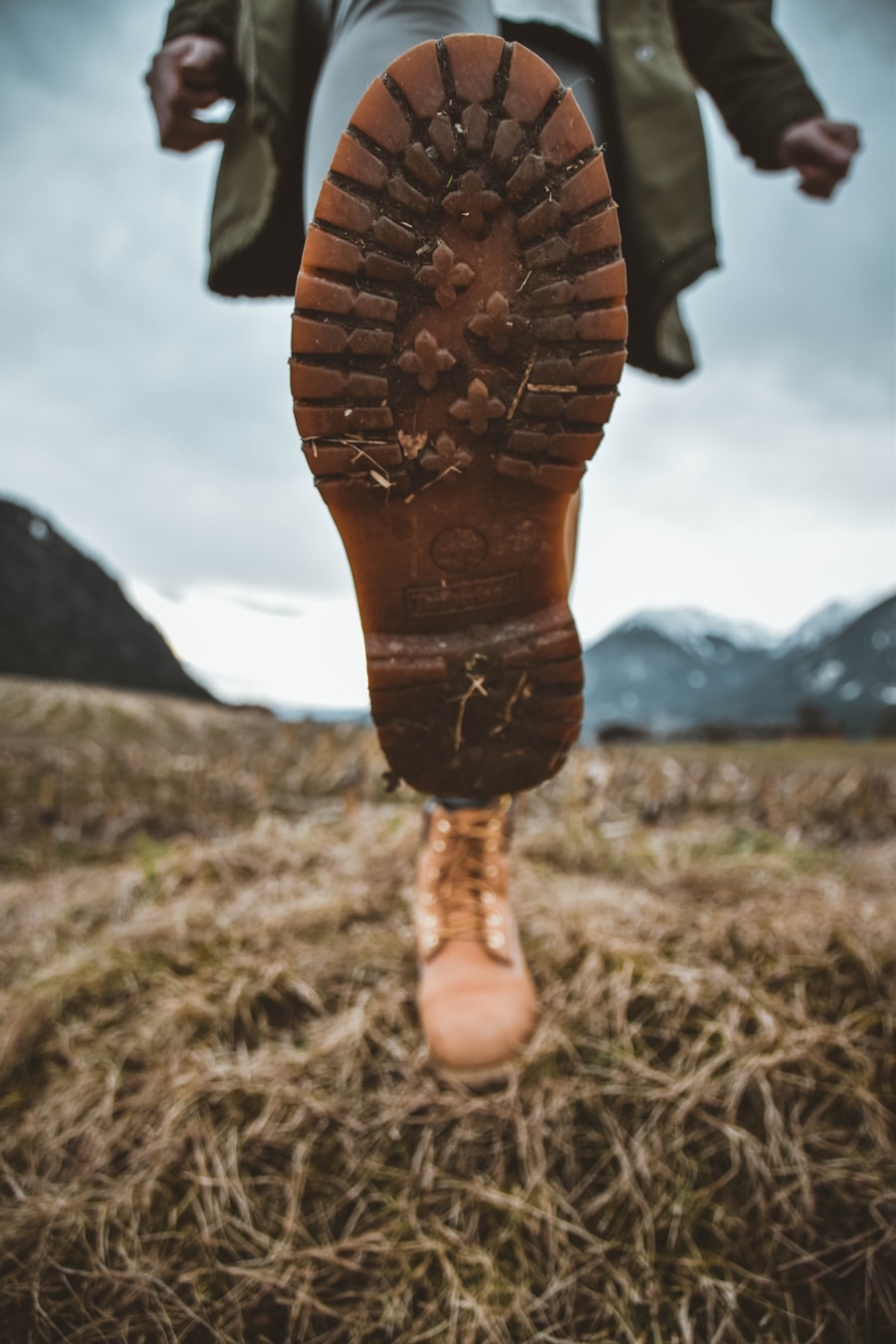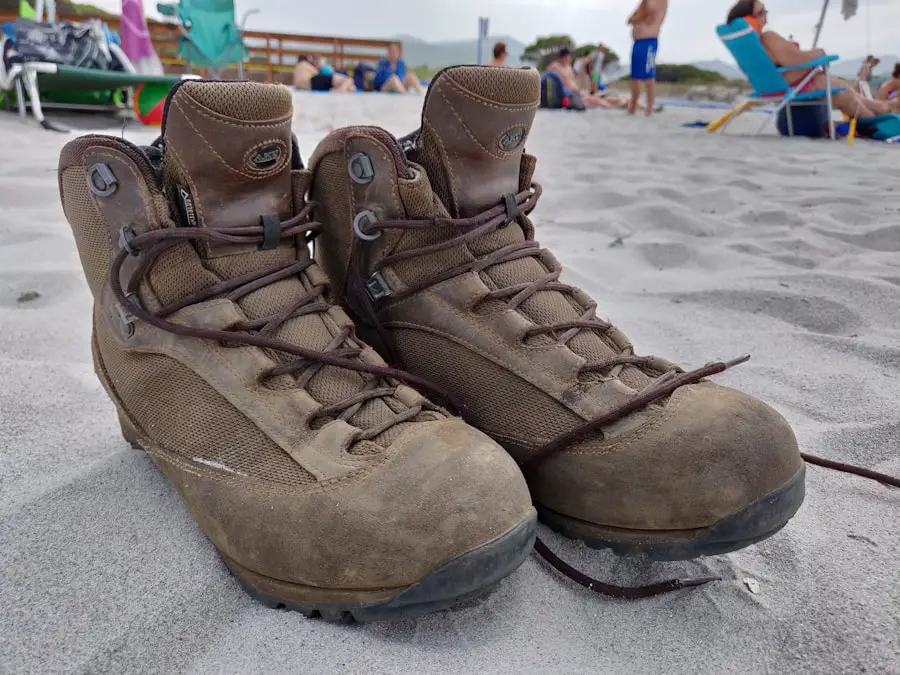The lifespan of hiking boots can vary significantly based on several factors, including the materials used, the frequency of use, and the type of terrain they are subjected to. Generally, a good pair of hiking boots can last anywhere from 500 to 1,000 miles of hiking, but this is a rough estimate. For instance, lightweight boots designed for day hikes may wear out more quickly than heavier, more robust models intended for rugged terrain and long-distance trekking.
The construction quality, including the stitching and the type of sole, plays a crucial role in determining how long a pair will last. Moreover, the conditions in which the boots are used can greatly affect their durability. Hiking in wet, muddy, or rocky environments can lead to faster degradation of materials.
For example, leather boots may absorb water and become heavy, leading to quicker wear and tear if not properly treated. Conversely, synthetic materials may dry out and crack if exposed to extreme temperatures or direct sunlight for prolonged periods. Understanding these factors is essential for hikers who want to maximize the lifespan of their footwear.
Key Takeaways
- Hiking boots have a lifespan of 500-1000 miles, depending on the terrain and usage
- Proper care and maintenance, including cleaning and waterproofing, can extend the lifespan of hiking boots
- Choosing the right hiking boots based on terrain, weather, and personal preferences is crucial for comfort and durability
- Rotating between multiple pairs of hiking boots can extend their lifespan and prevent wear and tear
- Avoiding harsh conditions such as extreme heat, cold, and wetness can prevent damage to hiking boots and prolong their lifespan
- Repairing and resoling hiking boots can extend their lifespan and save money on replacements
- Storing hiking boots properly in a cool, dry place can prevent damage and maintain their quality
- Knowing when it’s time to replace hiking boots, such as when the tread is worn or the support is compromised, is important for safety and comfort
Proper Care and Maintenance
Proper care and maintenance are vital for extending the life of hiking boots. After each hike, it is advisable to clean the boots thoroughly to remove dirt, mud, and debris that can cause damage over time. A soft brush or cloth can be used to wipe down the exterior, while a damp cloth can help remove any stubborn stains.
For leather boots, applying a specialized cleaner followed by a conditioner can help maintain the material’s suppleness and prevent cracking. In addition to cleaning, waterproofing is another critical aspect of boot maintenance. Many hiking boots come with a waterproof membrane, but this can wear off over time.
Regularly applying a waterproofing treatment can help keep feet dry during wet conditions. Furthermore, inspecting the laces and eyelets for wear is essential; replacing them when necessary can prevent further damage to the boot’s structure. By incorporating these maintenance practices into a regular routine, hikers can significantly prolong the life of their boots.
Choosing the Right Hiking Boots

Selecting the right hiking boots is fundamental to ensuring comfort and performance on the trail. The first step in this process is understanding the different types of hiking boots available. There are three primary categories: lightweight shoes for day hikes, mid-cut boots for moderate backpacking, and heavy-duty boots designed for challenging terrains.
Each type serves a specific purpose and is constructed with varying levels of support and protection. Fit is another critical factor when choosing hiking boots. A proper fit should allow for some wiggle room in the toes while providing adequate support around the ankle and heel.
Trying on boots with the socks you plan to wear during hikes is essential, as this can affect sizing. Additionally, considering the boot’s weight is important; lighter boots may be more comfortable for long distances but might not provide enough support for heavy loads or rugged trails. Ultimately, investing time in selecting the right pair can make a significant difference in overall hiking experience.
Rotating Your Hiking Boots
| Brand | Model | Weight (per pair) | Waterproof | Price |
|---|---|---|---|---|
| Salomon | X Ultra 3 Mid GTX | 2 lbs 2.8 oz | Yes | 165 |
| Merrell | Moab 2 Mid Waterproof | 2 lbs 4 oz | Yes | 135 |
| Keen | Targhee II Mid | 2 lbs 2 oz | Yes | 135 |
Rotating your hiking boots is an often-overlooked practice that can greatly enhance their longevity and performance. Just like any other piece of gear, hiking boots benefit from being given time to rest and recover between uses. When boots are worn continuously without breaks, they may not have sufficient time to dry out completely or regain their shape.
This can lead to premature wear on the materials and reduce their overall effectiveness. By having multiple pairs of hiking boots and rotating them based on the type of hike or terrain, hikers can ensure that each pair receives adequate care. For instance, one might choose to use a lightweight pair for day hikes while reserving a sturdier pair for more challenging treks.
This not only extends the life of each pair but also allows hikers to adapt their footwear to specific conditions, enhancing comfort and performance on the trail.
Avoiding Harsh Conditions
While hiking is often about embracing nature’s challenges, there are certain harsh conditions that can be detrimental to hiking boots. Extreme temperatures—both hot and cold—can adversely affect materials used in boot construction. For example, prolonged exposure to high heat can cause synthetic materials to warp or degrade, while freezing temperatures can make rubber soles brittle and prone to cracking.
Additionally, hiking in excessively wet conditions can lead to waterlogged boots that lose their structural integrity over time. If possible, it’s wise to avoid muddy trails or areas prone to flooding after heavy rains. When faced with unavoidable harsh conditions, taking extra precautions—such as using gaiters or waterproof covers—can help protect your boots from excessive wear and tear.
Repairing and Resoling Hiking Boots

Even with proper care and maintenance, hiking boots may eventually require repairs or resoling due to normal wear and tear. Resoling is particularly important for those who invest in high-quality boots; it allows hikers to extend the life of their footwear significantly without having to purchase an entirely new pair. Many manufacturers offer resoling services or recommend specific cobblers who specialize in this type of work.
Common issues that may necessitate repair include worn-out soles, damaged eyelets, or cracked leather. Addressing these problems promptly can prevent further damage and ensure that your boots remain functional on the trail. For instance, if you notice that the tread on your soles is wearing thin, it’s advisable to seek resoling before you find yourself slipping on wet or uneven surfaces.
By being proactive about repairs, hikers can maintain their footwear in optimal condition.
Storing Hiking Boots Properly
Proper storage of hiking boots is often overlooked but plays a crucial role in maintaining their shape and integrity over time. After cleaning and drying your boots post-hike, it’s essential to store them in a cool, dry place away from direct sunlight or heat sources that could warp or damage materials. Using boot trees or stuffing them with newspaper can help maintain their shape and prevent creasing.
Additionally, keeping your boots in a breathable bag rather than a plastic container allows moisture to escape and prevents mold growth. If you live in a humid climate, consider using silica gel packets or other moisture-absorbing materials in your storage area to keep humidity levels down. By taking these steps, you ensure that your hiking boots remain ready for your next adventure.
Knowing When It’s Time to Replace Hiking Boots
Recognizing when it’s time to replace hiking boots is crucial for maintaining safety and comfort on the trail. Signs that your boots may need replacing include visible wear on the soles, such as significant tread loss or cracks that compromise traction. Additionally, if you notice that your feet are consistently sore or blistered after hikes despite proper fitting and care, it may indicate that your boots have lost their supportive structure.
Another indicator is water resistance; if your once-waterproof boots are now allowing moisture in during wet conditions despite regular treatments, it may be time for a new pair. Ultimately, paying attention to these signs will help ensure that you remain safe and comfortable during your outdoor excursions while maximizing your investment in quality hiking footwear.
If you’re looking for durable footwear for your outdoor adventures, you may also be interested in reading about the best waterproof sneakers for travel. Just like hiking boots, waterproof sneakers can provide comfort and protection during your explorations. It’s important to invest in high-quality footwear that can withstand the elements and last for many trips to come.
Love travel? Join Our Facebook Community For More Tips.
FAQs
How long do hiking boots typically last?
Hiking boots can last anywhere from 500 to 1000 miles, depending on the quality of the boots, the terrain they are used on, and how well they are maintained.
What factors can affect the lifespan of hiking boots?
Factors that can affect the lifespan of hiking boots include the quality of the materials, the frequency and intensity of use, the terrain hiked on, and how well the boots are cared for and maintained.
How can I extend the lifespan of my hiking boots?
To extend the lifespan of hiking boots, it is important to properly clean and dry them after each use, store them in a cool, dry place, and regularly inspect and maintain them for any signs of wear and tear.
When should I replace my hiking boots?
Hiking boots should be replaced when the tread is worn down, the cushioning and support are no longer effective, or when there are visible signs of damage or deterioration that cannot be repaired.
What are some signs that my hiking boots need to be replaced?
Signs that hiking boots need to be replaced include visible cracks or tears in the material, worn-down tread, loss of support and cushioning, and discomfort or pain while wearing the boots.
